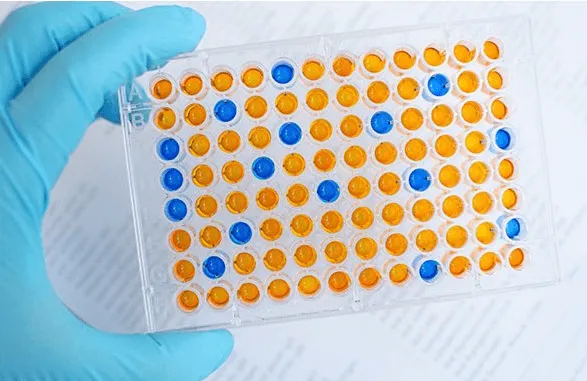
Introduction
Various tests detect and measure different bodily substances in medical diagnostics and research. One such important test is the Enzyme-Linked Immunosorbent Assay, commonly known as ELISA. It is a powerful diagnostic tool that detects and quantifies specific proteins, antibodies, hormones, and antigens. In this article, we will explore what an ELISA test is and how it works, along with its applications and advantages.
What is an ELISA Test?
The ELISA washer test is a highly sensitive and specific immunological assay used to detect and measure the presence of a target substance in a sample. Depending on the test’s purpose, the target substance can be an antigen or an antibody. ELISA is a plate-based assay whose working principle is based on the specific binding of antigens and antibodies.
How Does an ELISA Test Work?
The ELISA test involves several key components: a solid surface (usually a microplate), the target-specific capture antibody, the sample containing the target substance, a detection antibody labeled with an enzyme, and a substrate that produces a measurable signal. The test is performed in several steps, including coating the solid surface with the capture antibody, blocking any remaining binding sites, adding the sample to the plate, washing away unbound material, adding the detection antibody, and finally, adding the substrate to produce a visible signal.
Types of ELISA Tests
There are different types of ELISA tests, each with variations and applications. The three main types are:
Direct ELISA
The interested antigen is immobilized in a direct ELISA onto the microplate surface. The detection antibody, labeled with an enzyme, binds directly to the antigen, and the signal is directly proportional to the amount of antigen present.
Indirect ELISA
The indirect ELISA is a more common variation where the antigen is immobilized on the microplate, and the primary antibody is added. Then, a secondary enzyme-labeled antibody specific to the primary antibody is added. This two-step process amplifies the signal and increases sensitivity.
Sandwich ELISA
The sandwich ELISA is used for the detection of antigens, not antibodies. It uses two antibodies: one for capturing the antigen and the other for detecting it. The antigen is “sandwiched” between the two antibodies, resulting in high specificity.
ELISA Test Procedure
The ELISA test procedure can be summarized in the following steps:
- Coating the microplate with the capture antibody.
- Blocking any remaining binding sites to prevent non-specific binding.
- Adding the sample containing the target antigen or antibody.
- Washing away unbound material to remove any impurities.
- Adding the detection antibody labeled with an enzyme.
- Washing again to remove any unbound detection antibody.
- Adding the substrate that reacts with the enzyme and produces a measurable signal.
- Measuring the intensity of the signal, which is proportional to the concentration of the target substance.
Applications of ELISA Test
The ELISA test has a wide range of applications in various fields:
Medical Diagnosis
In medicine, ELISA is used for diagnosing various diseases, including infectious diseases, autoimmune disorders, and allergies. It enables healthcare professionals to detect the presence of specific antibodies or antigens associated with these conditions.
Food Testing
ELISA washer is also used in the food industry to detect allergens and contaminants, ensuring food safety and quality control.
Environmental Monitoring
Environmental scientists use ELISA to measure pollutants, toxins, and other substances in air, water, and soil samples, helping to monitor environmental health.
Advantages of the ELISA Test
The ELISA test offers several advantages:
- High Sensitivity: It can detect a sample’s low concentrations of target substances.
- High Specificity: It can distinguish between closely related molecules, ensuring accurate results.
- Versatility: ELISA can be adapted to detect various substances, making it a versatile tool.
- Cost-Effectiveness: It is a relatively affordable and efficient assay compared to other techniques.
Limitations of the ELISA Test
Despite its many advantages, the ELISA test also has some limitations:
- Potential Interference: Certain substances in the sample may interfere with the assay, leading to false results.
- Limited Quantification: ELISA provides semi-quantitative results and may not be suitable for precise measurements.
- Expertise Required: Skilled personnel are needed to perform the test correctly and interpret the results accurately.
Conclusion
In conclusion, the ELISA test is a valuable tool in medical diagnostics, research, and other industries. Its ability to detect and quantify specific antigens and antibodies has revolutionized disease diagnosis and research. As technology advances, ELISA will become even more precise and accessible, enhancing its applications and impact on various fields.
FAQs
- Is ELISA only used for medical purposes?
No, while ELISA is widely used in medical diagnostics, it also has food testing, environmental monitoring, and research applications.
- Can ELISA detect multiple targets in a single sample?
Yes, ELISA can detect multiple targets simultaneously with proper modifications and a panel of specific antibodies.
- Are ELISA test results consistently accurate?
ELISA test results are generally reliable, but false positives or negatives can occur due to various factors. Proper quality control measures are essential.
- Is ELISA a rapid test?
Compared to some rapid tests, ELISA may take longer to perform. Still, its sensitivity and specificity make it an invaluable diagnostic tool.
- Can ELISA be automated?
Many modern laboratories use automated ELISA systems to increase efficiency and reduce human error.